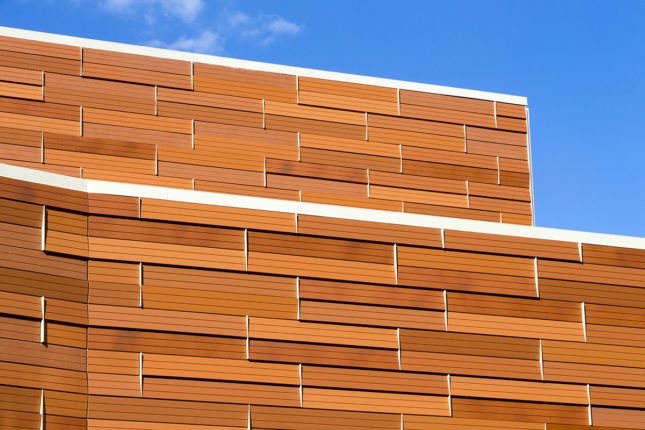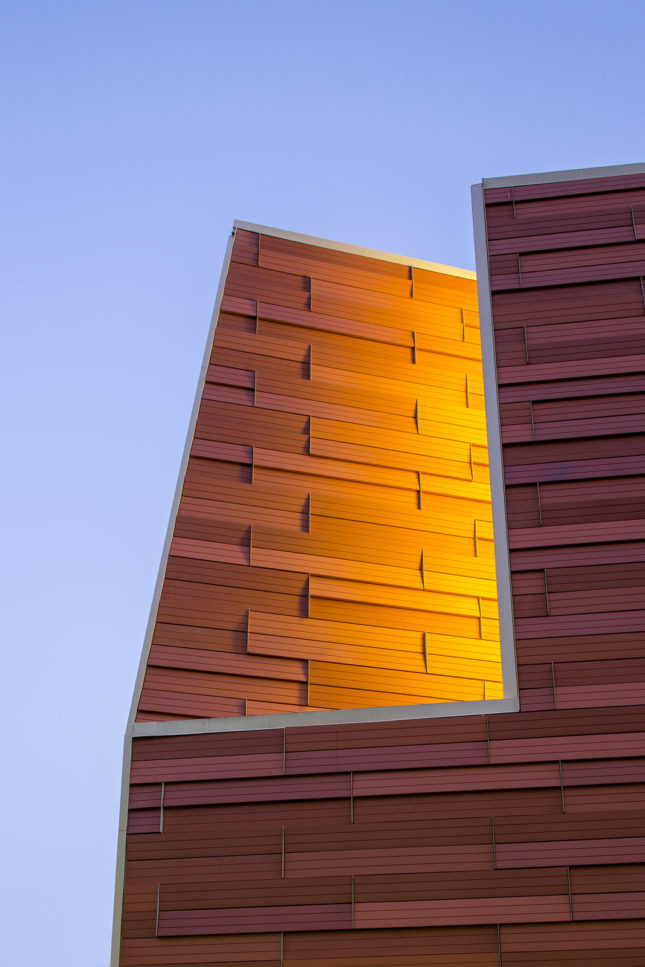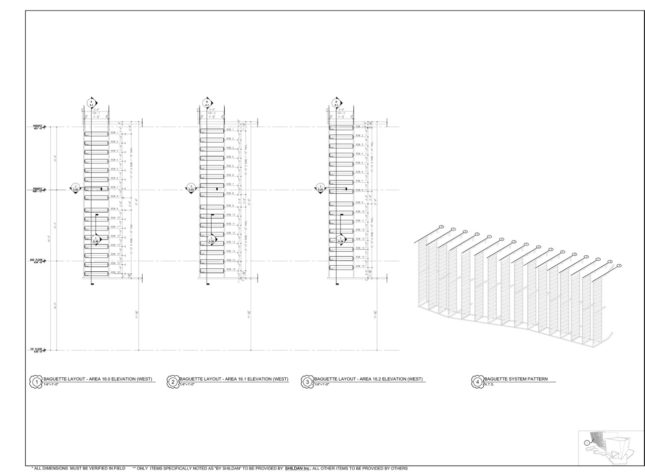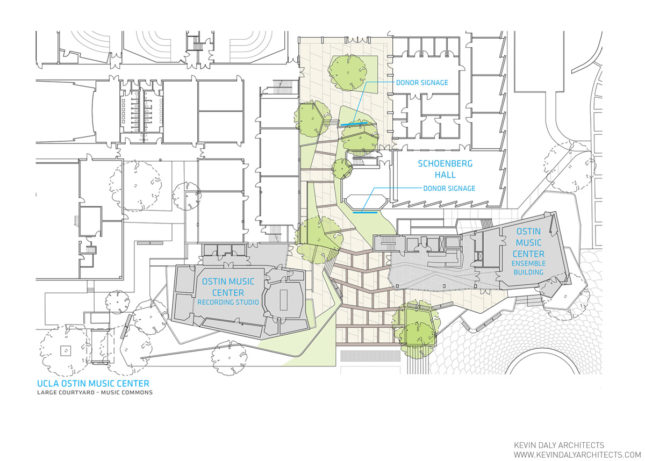Kevin Daly Architects recently completed an addition to UCLA’s Herb Alpert School of Music that sets a new framework for the school’s future growth and presents a new face for the music building. The Evelyn and Mo Ostin Music Center is the second addition to the 1950s structure that was previously augmented in the 1980s. Sited within UCLA’s campus of over 200 buildings, the project was regulated by campus design standards that define a material palette consisting of a “UCLA blend brick,” along with buff stone, terra-cotta, and concrete. According to UCLA’s Physical Design Framework, these are “enduring materials that express a quality of permanence and durability.” The standards reference the first four buildings constructed on campus nearly 100 years ago, in a red brick romanesque revival style.
A terra-cotta rainscreen system was ultimately specified for its performative qualities, which helped the building achieve UCLA’s required energy standards – a significant 20% better than state energy codes. Open joints in the finish material promote natural ventilation and solar shading. This assembly provides higher R-values throughout the exterior facade by allowing for a continuous layer of insulation, and helps to eliminate air infiltration. The cladding system also allowed for a relatively standard CMU exterior wall construction.
KDA collaborated across the country with East Coast-based terra-cotta manufacturer Shildan to produce the custom facade material. Kevin Daly, founder of KDA, described this design process as a “collaboration to get [a] contemporary material to fit within a historic campus.” Bricks from UCLA’s campus were sent to the Mount Laurel, New Jersey company who color matched them to their standard color palette.
- Facade Manufacturer
Shildan Group (terracotta) - Architects
Kevin Daly Architects - Facade Installer
Rainbow Glazing - Construction Manager
Shildan Group - Location
Los Angeles, CA - Date of Completion
2015 - System
Terracotta rainscreen over insulated CMU shell - Products
Alphaton Terracotta Rainscreen & Baguette Terracotta Sunscreen Systems (Shildan); Aluminum curtainwall system (Arcadia); Steel glazing system at acoustical windows (Arcadia); Ombra Honeycomb insulated glass unit insert (Pulp Studio)
Daly said their desire for this project to produce a more natural effect pushed Shildan to do something slightly different than what they normally do: “In a lot of the industry, the focus is to produce super consistent results, so that by the time you wrap the building with material, the end matches where you began. We wanted to do something different. We wanted to introduce a slight variation that was consistent enough to look like it was all from one palette, but at the same time was not a factory-produced tightly controlled material.”
In response, Shildan developed a custom fabrication process that produced this variation. Six tile styles were created with various glazing and firing techniques on two standard color finishes. The panels, made from 35% recycled content, were selectively left in the firing process longer than typical, while others were fired under slightly different temperatures, introducing variation to the material qualities of the panels. A number of mockups developed some basic ground rules for the design team based on campus guidelines. KDA worked with available terra-cotta samples to demonstrate their idea before developing the mockups into full-scale test systems.
The desire to produce variation in terra-cotta is not unique, but the methods employed at Ostin are notable. At Lawrence Public Library, Gould Evans introduced variation to their facade by designing a combination of grooved and smooth panels, specifically controlling the panel texture. At UCLA, KDA’s facade produced variation through the materials manufacturing process and by a panel rotation, casting shadows over the facade for an additional natural layer of perceived color variation.
Focusing on the contextual specificity of their project within the historic campus setting, KDA introduced an additional level of detail to the facade. Grooves etched into the terra-cotta panel register course lines found in standard brick on campus. A louvered screen at Knusten Hall, which faces the music center from across a public plaza, provided the basis for a significant sunshading system marking the west facing main entrance. Fixed in place diamond-shaped terra-cotta baguettes framed off a secondary steel structure spring from an expansive curtainwall. The system is saturated in UCLA’s classic “buff” limestone color.
The curtainwall system features what Daly calls a “transparent shading system,” integrating an extruded polycarbonate honeycomb material into the insulated glass layers to provide an extra layer of solar protection. At the corners of the faceted building, a reverse mitered edge trim out of painted aluminum protects the open end of the terra-cotta panels, while “fins” set proud of the undulating facade surface help articulate the texture of the facade by casting shadows registering the varied angles of the panels onto the building.
The interior acoustical spaces provide a unique cladding design that was driven by economy and the desire to create a dynamic environment. KDA worked with Newson Brown Acoustics to develop a design that utilizes three repetitively cut douglas fir and spruce shapes. These panels were re-assembled into layers to produce a complex surface patterning which was flexible enough to expand or contract the quantity of exposed absorptive acoustical material.
































